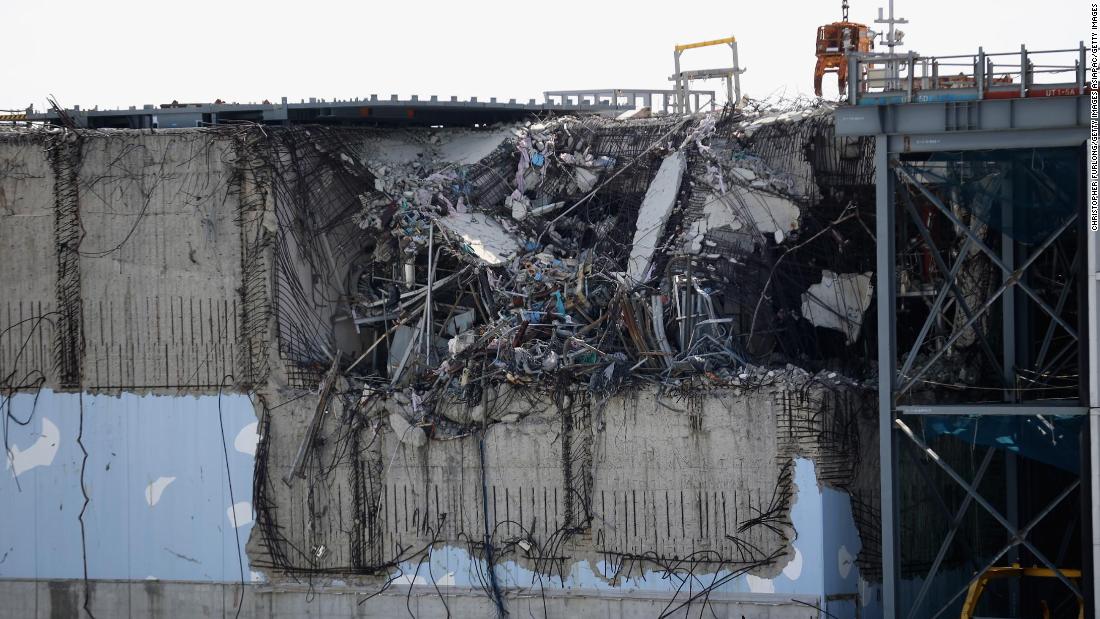
A court in Tokyo acquitted the former chairman and two former vice presidents of Tokyo Electric Power Company (Tepco), the firm which operated the Fukushima Daiichi plant, according to public broadcaster NHK. The trio were accused negligence for failing to implement safety measures, all three pleaded not guilty. Tsunehisa Katsumata, Sakae Muto and Ichiro Takekuro argued they could not have reasonably foreseen the disaster and thus were not responsible for its effects, including the premature deaths of 44 hospital patients linked to the emergency evacuation.
Japanese prosecutors had previously refused to charge the men, and only took up the case after a concerted legal effort by the families of the dead and those who were evacuated from the area around Fukushima.
The cleanup from the disaster -- caused when an earthquake-triggered tsunami struck the plant -- is expected to take decades, and cost billions of dollars. Tens of thousands of people still remain displaced, eight years after the original meltdown.
This month, officials said that water pumped into the stricken plant to cool its nuclear cores might have to be dumped into the ocean, due to a lack of storage space for the thousands of tons of contaminated liquid. Around 300 to 400 tons of highly radioactive water is generated every day; it's currently stored in hundreds of tanks at the site, from which there have been multiple leaks in the years since decommissioning started.
"There are no other options," environment minister Yoshiaki Harada said of dumping the water into the sea, though other officials claimed a final decision has not yet been made.
The suggestion of dumping even diluted radioactive runoff raised alarm in neighboring South Korea, and could effect the Japanese fishing industry over fears of contamination, regardless of whether these are valid. The original disaster sparked panics in China and on the United States West Coast, where radioactive isotopes have been detected in the California wine crop.
Tepco has previously estimated the Fukushima cleanup could take up to 40 years, at a cost of some $50 billion.
Flood of misery
The worst nuclear disaster in Japan's history started with a wave.
After a 9.1-magnitude earthquake struck 370 kilometers (230 miles) northeast of Tokyo, the wave started building in height, propelled by the power of a quake so strong it permanently moved Japan's main island, Honshu, more than two meters to the east.
By the time it reached the Japanese east coast, waves from the tsunami measured up to 40 meters (132 feet) in height, sweeping away vehicles, causing buildings to collapse, and severing roads and highways.
Within 50 minutes of the first quake, the wave crested a 10-meter (33 feet) sea wall intended to protect the Fukushima nuclear plant from just such an event. Water began pouring into the plant, inundating the basement, where emergency power generators were soon flooded, knocking vital cooling systems offline and causing reactor fuel rods to begin to melt down and leak deadly radiation into the surrounding area.
Sixteen hours into the disaster, the fuel rods in one reactor had almost completely melted, with the other two close behind, but it would be another 88 days until the government admitted that a meltdown had taken place, the worst nuclear disaster since the 1986 Chernobyl explosion.
Tens of thousands of local residents were evacuated, with some never able to return to their homes. Parts of the area around Fukushima became ghost towns, visited only by Tepco officials, safety inspectors and tourists seeking a dark thrill.
Is anyone to blame?
Tepco's liability has been a key point of contention since the meltdown.
The firm has firmly maintained that the disaster was just that, a catastrophic event that could not have been planned for. The Tohoku earthquake was the fourth largest in world history, the largest ever to strike Japan, and Tepco's position is that it simply could not have been expected to guard against such a disaster.
But evacuees -- some of whom may never be able to return to their homes -- have argued this lets plant officials off the hook.
Certainly, Tepco's response in aftermath the disaster has provided plenty of ammunition for critics, such as the delay in announcing a meltdown was taking place, Tepco's own admitted downplaying of safety concerns, and multiple leaks of contaminated water during the cleanup process.
In 2012, a Japanese government report found that measures taken by Tepco and the Japanese nuclear regulator to prepare for disasters were "insufficient" and response to the crisis "inadequate." That came in the wake of a study presented in parliament which said the disaster, far from being an act of nature, was a "man-made" catastrophe which should have been predicted and prepared for.
In fact, of all the studies of the disaster, only Tepco's own internal report found that no one could have predicted the scale of the earthquake and tsunami and prepared for them. A parliamentary panel said that "the direct causes of the accident were all foreseeable prior to March 11, 2011."
Despite these damning findings, however, Japanese authorities have shown little desire to hold Tepco officials accountable. Prosecutors twice refused to bring charges, and this week's court case only occurred after residents appealed.
Thursday's decision now closes the legal chapter on Fukushima. But as tons and tons of contaminated water continue to build up at the site of the former plant, and fuel rods remain to be cleared, the ghosts of the disaster will be with Japan for decades to come.
Bagikan Berita Ini















0 Response to "Fukushima trial ends in not guilty verdict, but nuclear disaster will haunt Japan for decades to come"
Post a Comment